 Backend Development
Backend Development Golang
Golang Implementation of blockchain storage and data structure (written in Go language)
Implementation of blockchain storage and data structure (written in Go language)With the continuous development and progress of human society, data has become an indispensable part of our lives. Over the past few decades, we have created vast amounts of data, including text, images, audio, and video. This data plays an important role in our lives, allowing us to work and play more efficiently. However, due to the huge volume and complexity of data, traditional data storage methods may face some challenges, such as data security, scalability, and sustainability. In order to solve these problems, in recent years, a new type of data storage technology - blockchain storage - has begun to attract people's attention.
Blockchain storage is a distributed data storage technology that uses distributed computing nodes to jointly manage and store data. These computing nodes are usually maintained by different people or organizations, and they ensure the security and reliability of data through complex algorithms. Compared with traditional centralized data storage technology, blockchain storage is more secure, transparent and decentralized.
However, realizing blockchain storage is not an easy task. It requires solving many technical problems, such as data structure, encryption algorithm, network transmission, etc. Go language is an efficient, scalable and easy-to-write programming language. It has become one of the preferred languages for implementing blockchain storage. In this article, we will introduce in detail how to use Go language to implement blockchain storage and explore its key technologies and data structures.
1. Data structure
The core of blockchain storage is a linked list composed of multiple data blocks. Each data block contains a reference to the previous data block and a hash of the current data. Hope value. This linked list is called a blockchain, which is a data structure that can only move forward and cannot be modified or deleted. The following is a simple blockchain data structure definition:
type Block struct {
Index int
Timestamp int64
Data []byte
PrevHash []byte
CurrentHash []byte
}Among them, Index represents the position of the current data block in the linked list, Timestamp represents the creation time of the current data block, and Data represents the actual data of the current data block. PrevHash represents the hash value of the previous data block, and CurrentHash represents the hash value of the current data block. The hash value of the previous data block is the PrevHash of the current data block, and the hash value of the current data block is the CurrentHash of the current data block. In this way, it is ensured that each data block corresponds to the previous data block, thus ensuring the integrity and security of the linked list.
2. Encryption Algorithm
In order to ensure the security and reliability of blockchain storage, a powerful encryption algorithm needs to be used to encrypt and verify the data. SHA256 is a very excellent encryption algorithm that is efficient, safe and reliable. In the Go language, you can use the crypto/sha256 package to implement the SHA256 encryption algorithm, for example:
func calculateHash(block Block) []byte {
record := string(block.Index) + string(block.Timestamp) + string(block.Data) + string(block.PrevHash)
h := sha256.New()
h.Write([]byte(record))
hash := h.Sum(nil)
return hash
}Among them, the calculateHash function calculates the hash value of the given data block and returns the result. Specifically, it converts all fields of that data block into strings and concatenates them together to form a record. Then, use the SHA256 algorithm to calculate the hash value of the record, and finally return the result.
3. Network transmission
Since blockchain storage requires the use of multiple computing nodes to jointly maintain and store data, an effective network transmission protocol is needed for data transmission and synchronization. In the Go language, you can use the net package and the rpc package to implement network transmission, for example:
type Server int
func (s *Server) PushBlock(block Block, result *bool) error {
// 将数据块加入区块链
return nil
}
func main() {
var server Server
rpc.Register(&server)
listener, err := net.Listen("tcp", ":12345")
if err != nil {
log.Fatal("Listen error:", err)
}
for {
conn, err := listener.Accept()
if err != nil {
log.Fatal("Accept error:", err)
}
go rpc.ServeConn(conn)
}
}Among them, the PushBlock function is an RPC function used to add a given data block to the blockchain. This function uses a Boolean pointer to represent the result of the operation and returns an error object. In the main function, start the service by registering the Server object and listening to the specified port. Whenever a client connects to the server, use the rpc.ServeConn function to serve it. In this way, data synchronization and sharing can be achieved through network transmission.
4. Summary
Blockchain storage is an important technology, which has the advantages of security, transparency and decentralization. Go language is an excellent programming language that is efficient, scalable and easy to write. It has become one of the preferred languages for implementing blockchain storage. In this article, we introduce the core data structure, encryption algorithm and network transmission technology of blockchain storage, and write relevant codes using Go language. Of course, in addition, there are many other key technologies, such as consensus algorithms, smart contracts, etc., which also need to be further explored and implemented.
The above is the detailed content of Implementation of blockchain storage and data structure (written in Go language). For more information, please follow other related articles on the PHP Chinese website!
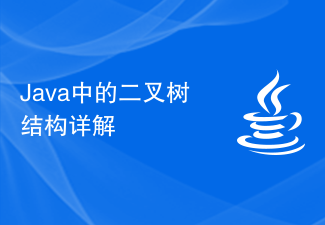 Java中的二叉树结构详解Jun 16, 2023 am 08:58 AM
Java中的二叉树结构详解Jun 16, 2023 am 08:58 AM二叉树是计算机科学中常见的数据结构,也是Java编程中常用的一种数据结构。本文将详细介绍Java中的二叉树结构。一、什么是二叉树?在计算机科学中,二叉树是一种树形结构,每个节点最多有两个子节点。其中,左侧子节点比父节点小,右侧子节点则比父节点大。在Java编程中,常用二叉树表示排序,搜索以及提高对数据的查询效率。二、Java中的二叉树实现在Java中,二叉树
 Python 实现栈的几种方式及其优劣May 19, 2023 am 09:37 AM
Python 实现栈的几种方式及其优劣May 19, 2023 am 09:37 AM想了解更多关于开源的内容,请访问:51CTO开源基础软件社区https://ost.51cto.com一、栈的概念栈由一系列对象对象组织的一个集合,这些对象的增加和删除操作都遵循一个“后进先出”(LastInFirstOut,LIFO)的原则。在任何时刻只能向栈中插入一个对象,但只能取得或者删除只能在栈顶进行。比如由书构成的栈,唯一露出封面的书就是顶部的那本,为了拿到其他的书,只能移除压在上面的书,如图:栈的实际应用实际上很多应用程序都会用到栈,比如:网络浏览器将最近浏览
 PHP8中会支持的数据结构,将为你的代码提供更大空间Jun 21, 2023 am 08:13 AM
PHP8中会支持的数据结构,将为你的代码提供更大空间Jun 21, 2023 am 08:13 AMPHP是一种广泛使用的脚本语言,被广泛用于Web开发,服务器端编程以及命令行编程等。随着PHP不断更新和发展,它也日益成为一个更强大的编程工具,为用户提供了更多的功能和更多的工具来开发高质量的应用程序。其中,数据结构是一个非常重要的领域,一种有效的数据结构可以大大提高程序的性能和可读性。在这篇文章中,我们将讨论PHP8中支持的新数据结构,这些新的数据结构将让
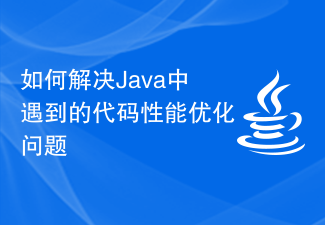 如何解决Java中遇到的代码性能优化问题Jun 29, 2023 am 10:13 AM
如何解决Java中遇到的代码性能优化问题Jun 29, 2023 am 10:13 AM如何解决Java中遇到的代码性能优化问题随着现代软件应用的复杂性和数据量的增加,对于代码性能的需求也变得越来越高。在Java开发中,我们经常会遇到一些性能瓶颈,如何解决这些问题成为了开发者们关注的焦点。本文将介绍一些常见的Java代码性能优化问题,并提供一些解决方案。一、避免过多的对象创建和销毁在Java中,对象的创建和销毁是需要耗费资源的。因此,当一个方法
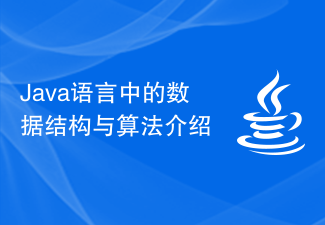 Java语言中的数据结构与算法介绍Jun 10, 2023 pm 01:37 PM
Java语言中的数据结构与算法介绍Jun 10, 2023 pm 01:37 PM随着计算机科学的不断发展,数据结构与算法成为了计算机科学领域中最为基础、重要的模块。数据结构是一种组织和存储数据的方式,它是解决问题的基础。算法则是计算机科学的核心,它是指在计算机程序中解决问题的方法和技术。Java作为一种广泛应用的编程语言,其自带的数据结构和算法库是非常强大的,赋予了开发人员更多的力量。一、数据结构Java中提供了多种数据结构,包括数组
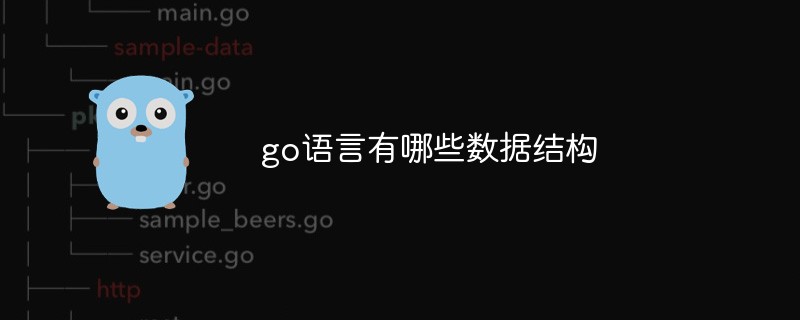 go语言有哪些数据结构Dec 16, 2022 pm 02:00 PM
go语言有哪些数据结构Dec 16, 2022 pm 02:00 PMgo语言数据结构有四大类:1、基础类型,包括整型(有符号和无符号整数)、浮点数、复数、字符串(由不可变的字节序列构成)、布尔值(只有true和false两个值);2、聚合类型,包括数组、结构体(是由任意个任意类型的变量组合在一起的数据类型);3、引用类型,包括指针、slice(是一个拥有相同元素的可变长度序列)、map、function、channel;4、接口类型。
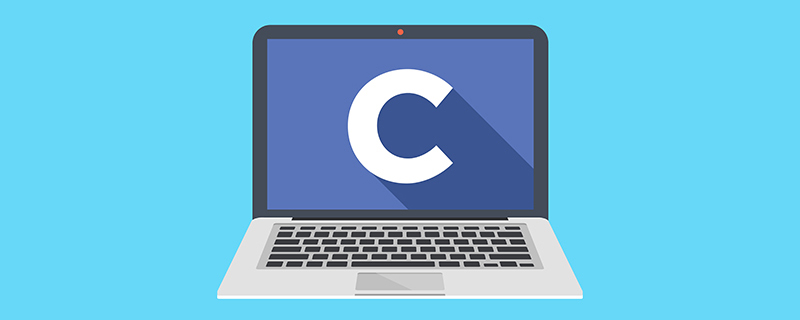 c语言中数据结构是什么?常见数据结构有哪些?Nov 03, 2020 am 11:38 AM
c语言中数据结构是什么?常见数据结构有哪些?Nov 03, 2020 am 11:38 AMc语言中,数据结构是指相互之间存在一种或多种特定关系的数据元素的集合,它是计算机存储、组织数据的方式;常见数据结构有:线性数据结构(数组、链表、栈、队列和线性表)、树形结构(二叉树、完全二叉树、二叉查找树、堆)、图形结构(有向图和无向图)。
 Go语言中的数据结构的实现方式Jun 01, 2023 pm 06:51 PM
Go语言中的数据结构的实现方式Jun 01, 2023 pm 06:51 PMGo语言是一种支持并发编程的语言,它的内置数据结构非常丰富,可以满足不同场景下的需求。Go语言中实现数据结构的方式有多种,包括数组、切片、字典、链表和树。数组和切片是最基础的数据结构,它们都可以存储一组相同类型的元素。不同之处在于数组的长度是固定的,而切片则可以动态扩展。Go语言中使用数组和切片可以快速创建数据结构,例如著名的排序算法中的快速排序和归并排序都


Hot AI Tools

Undresser.AI Undress
AI-powered app for creating realistic nude photos

AI Clothes Remover
Online AI tool for removing clothes from photos.

Undress AI Tool
Undress images for free

Clothoff.io
AI clothes remover

AI Hentai Generator
Generate AI Hentai for free.

Hot Article

Hot Tools

Atom editor mac version download
The most popular open source editor

Dreamweaver CS6
Visual web development tools

Safe Exam Browser
Safe Exam Browser is a secure browser environment for taking online exams securely. This software turns any computer into a secure workstation. It controls access to any utility and prevents students from using unauthorized resources.

MantisBT
Mantis is an easy-to-deploy web-based defect tracking tool designed to aid in product defect tracking. It requires PHP, MySQL and a web server. Check out our demo and hosting services.

Zend Studio 13.0.1
Powerful PHP integrated development environment





